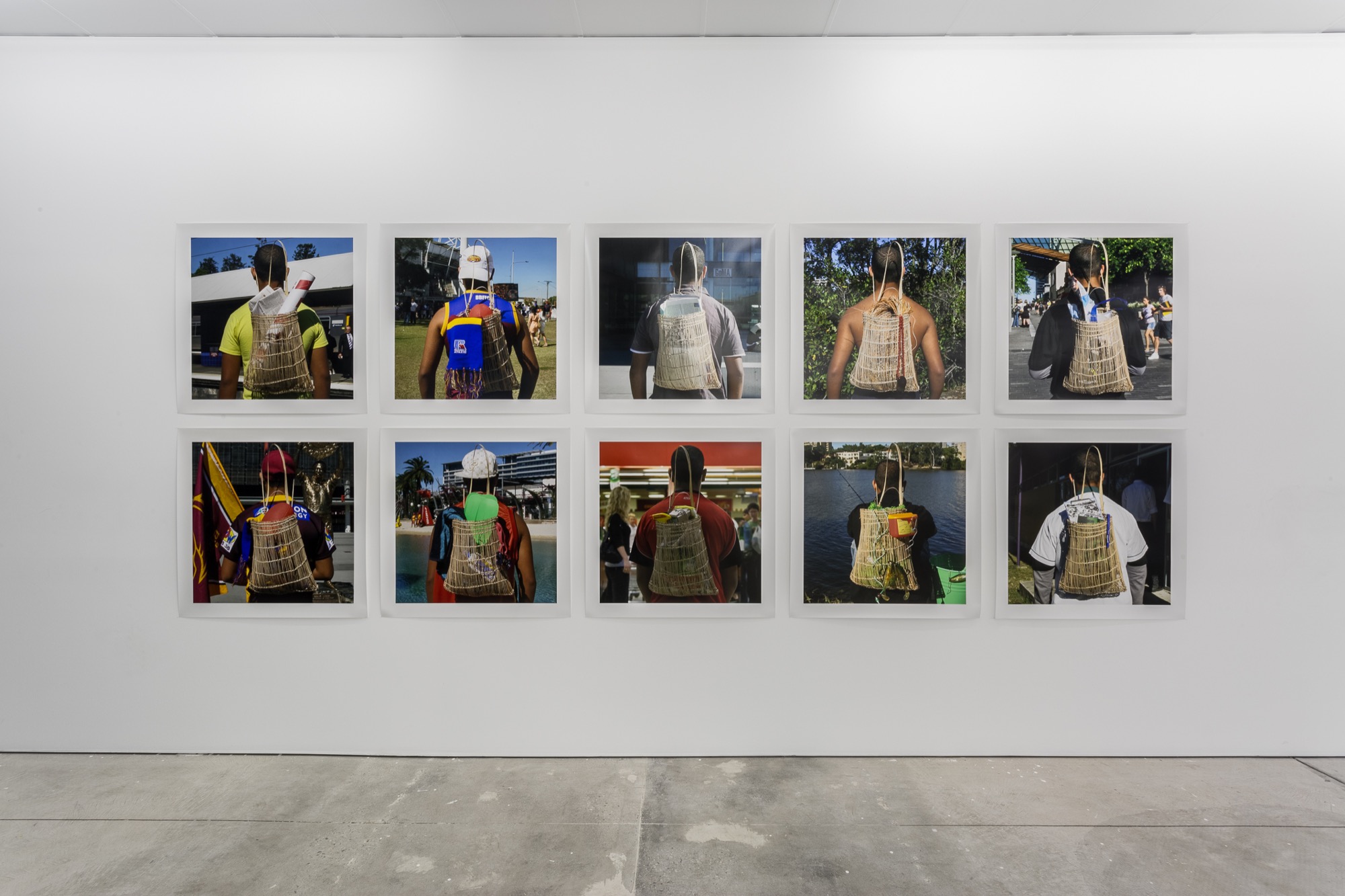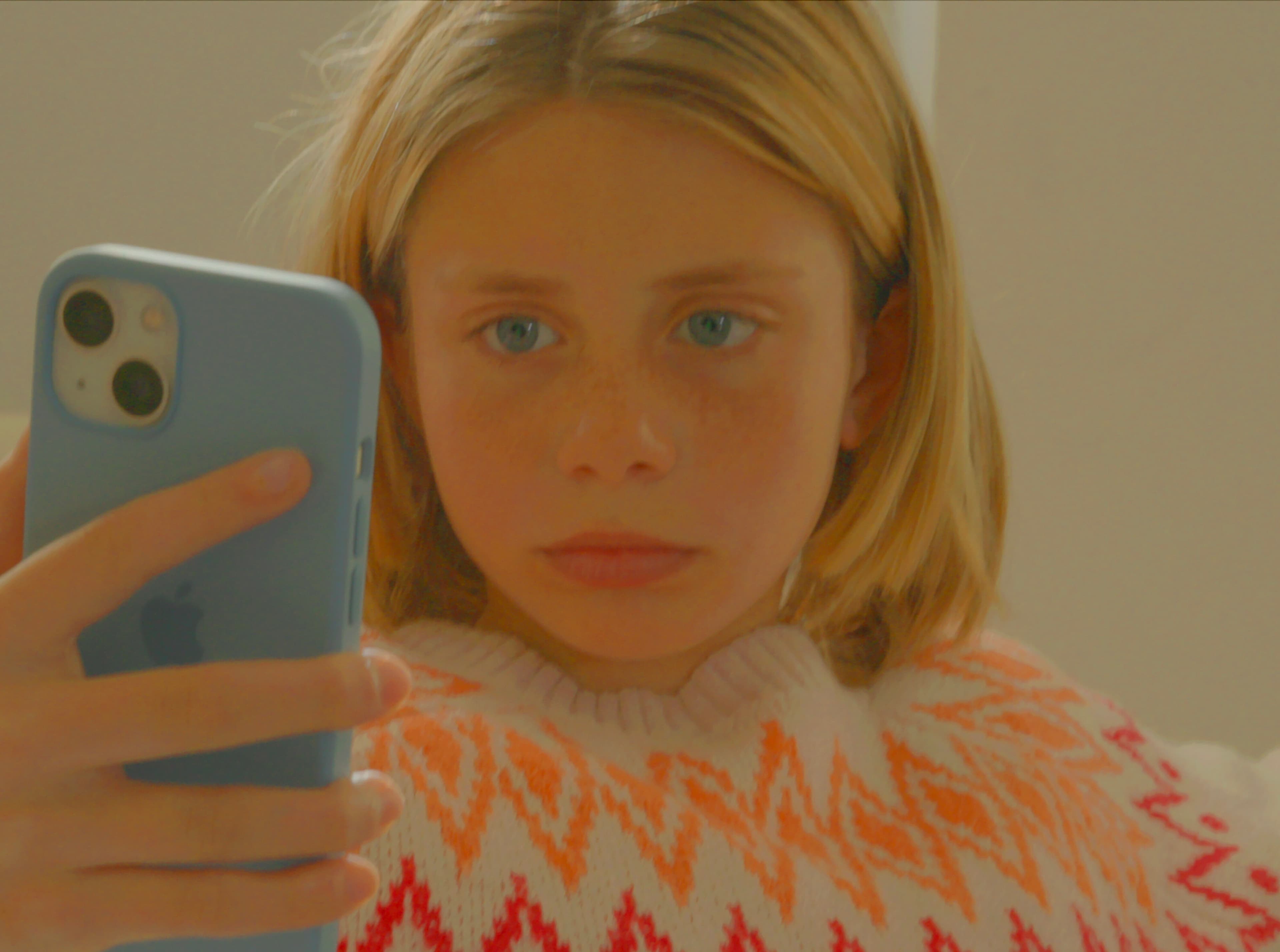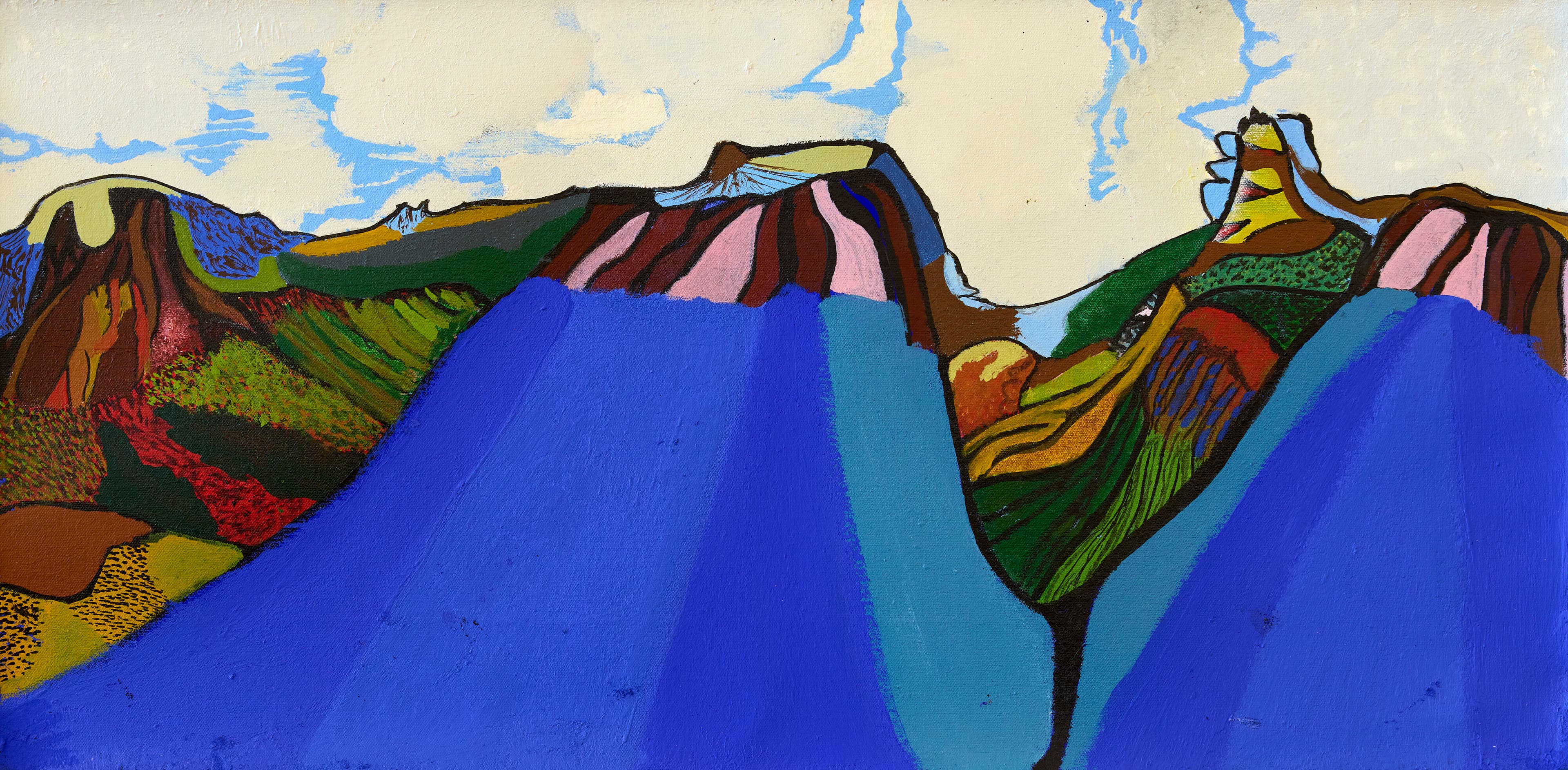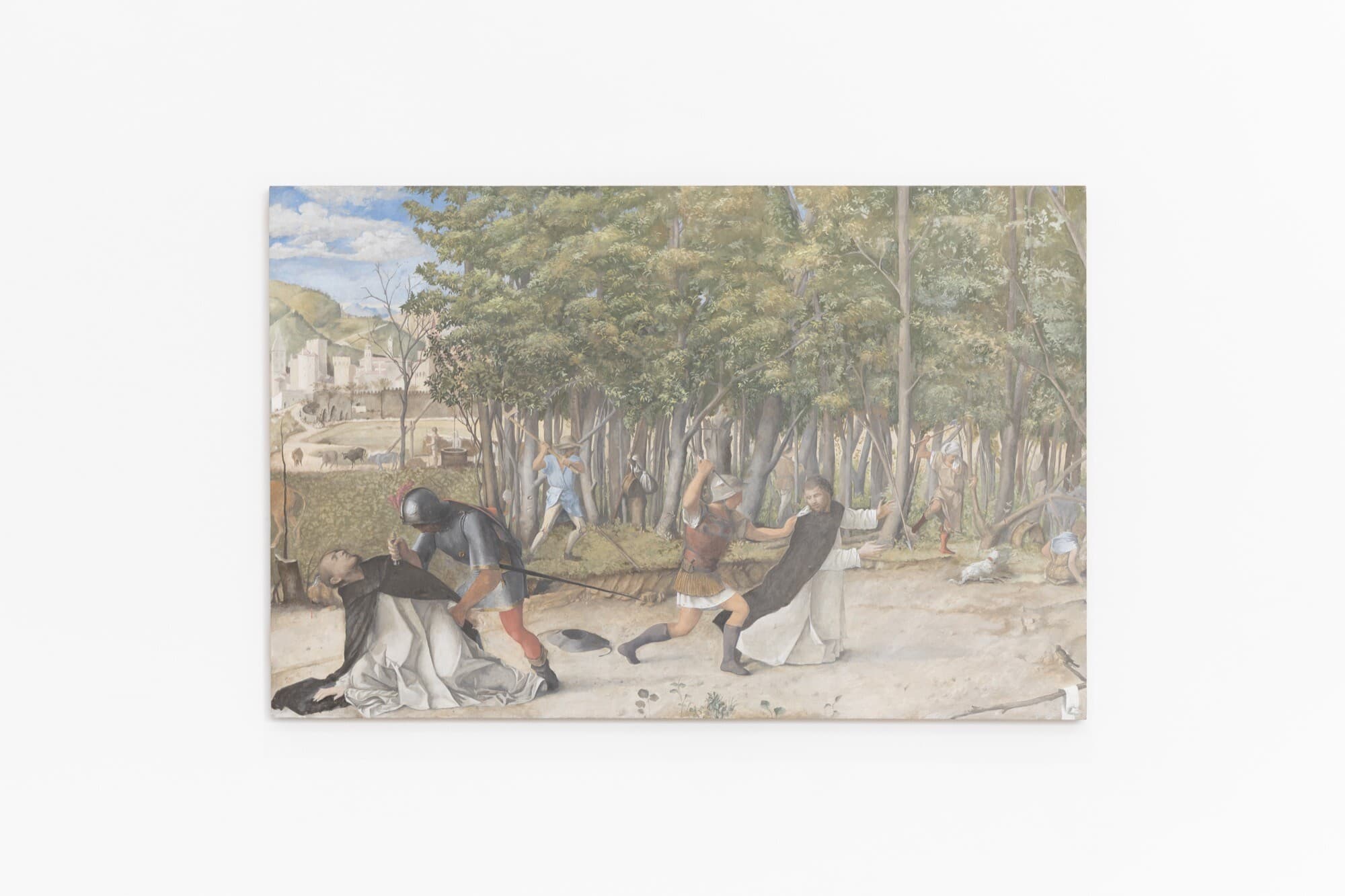Forever Transformed
Anna Parlane
The recent relocation of Gertrude Contemporary from its long-term home in Fitzroy is both cause and effect of Melbourne’s ongoing gentrification. Having occupied 200 Gertrude Street for over three decades, the gallery’s move was forced by the rising costs of remaining in this increasingly “desirable” neighbourhood—a desirability, it is worth noting, that was in part stimulated by the presence of the gallery and studio complex itself. Now occupying a building freshly fitted out by architects Edition Office at 21 High St Preston, Gertrude again finds itself a frontrunner in the real estate vanguard. The gallery’s Preston premises received a write-up in Broadsheet, and the accompanying photographs lovingly detailed the pot-plant-and-plywood industrial elegance of the new studio spaces. The new Gertrude was thereby positioned firmly in the ranks of the trendy bars and eateries that the magazine covers, venues that increasingly populate suburbs like Preston as hipsterdom marches northwards along the 86 line.

Culture’s position as both tool and victim of insatiable urban gentrification is not new. However, as Gertrude’s inaugural exhibition in the new premises points out, narratives of victimhood and resilience seem to be on the rise. The 17th incarnation of Gertrude’s long-running Octopus series, Forever Transformed was guest-curated by Georgie Meagher. It examines the demand for rapid adaptation to changing circumstances, and endurance in the face of sometimes overwhelming threats. The most interesting aspect of the exhibition is its critical departure from the assumption that resilience is necessarily a positive quality, positing that a ‘keep calm and carry on’ ethos ultimately serves to maintain the inequitable social order that created the need for such stamina in the first place.

While Forever Transformed contains good work—Tony Albert’s and Liz Linden’s works are confident and sharp—and while Meagher’s curatorial concept is intelligent, novel and topical, the exhibition feels somehow constrained or self-conscious. This self-consciousness derives from the installation of the works, which are lined up nervously around the periphery of the rooms. Like a first arrangement of furniture in a new house, the exhibition hasn’t yet relaxed into the space. It isn’t easy to be the first, and the fact that Gertrude’s staff opted for an external curator for this inaugural exhibition, rather than taking the opportunity to solidify the gallery’s own institutional voice, does set an odd tone. However the stresses of the move and the protracted period of uncertainty that preceded it no doubt tested the capacity of Gertrude’s team. Meagher is sympathetic, tying Gertrude’s own institutional adaptability and the internal stresses that such flexibility masks to our broader cultural and political moment.

Liz Linden’s and Sophie Cassar’s works both critically appraise the value of fortitude under adverse circumstances. Given the predominance of women working in unpaid or underpaid roles, and also given domestic violence statistics, it is unsurprising that female artists and a female curator are primed to cast a sceptical eye over claims of the virtue of resilience. Linden’s Damaged Goods, 2016, is a series of large inkjet prints of different book covers bearing the same title. The exhibition catalogue relates that she discovered over twenty publications titled Damaged Goods, ranging from trash romances to Christian self-help. Six book covers, all featuring images of women, are displayed in Forever Transformed, their repetition serving to underscore the perversity of this cultural fascination with romanticised female victimhood. Cassar’s adjacent installation Little girls love to cry so much that I have known them to cry in front of the mirror in order to double the pleasure, 2017, touches on similar themes. The work, which deploys a relentlessly cutesy aesthetic of pastel-toned fabrics and Hello Kitty stickers, strangely combines the languages of display and introspection. A pink plastic-framed mirror and some sticker-encrusted diaries evoking the tortured soul-searching of early adolescence are arranged on display stands, accompanied by plinths bearing mirrors and glass microscope plates that are also decorated with stickers. On one hand, this seems like an adolescent training ground for the spectacle of female victimhood on display. On the other, it could be read as a refusal of stoicism: a public display of the infantile, narcissistic anxieties that resilience conceals.

Tony Albert’s Optimism, 2008, is a series of photographs of the artist’s cousin wearing a Jawun, a basket traditional to northern Queensland, which is carried like a backpack with a strap across the wearer’s forehead. In contrast to Linden’s and Cassar’s scepticism, adaptive resilience is here regarded not only as a positive attribute but as an absolute necessity. The repeated appearance of the Jawun in multiple different contexts—at the footy, at uni, in an urban street, in the bush—conveys the opposite message to Linden’s repeated images of victimised women. Albert, who is a Girramay and Kuku Yalanji man, offers the solidity of Indigenous identity and the strength of tradition as a means of surviving even calamitous change. Rushdi Anwar’s The Circle of Knowing and Unknowing, 2012-16, also looks to the resilience of both tradition and institution as a matter of cultural survival. Anwar’s floor-based circle of white chalk and black pigment powder establishes a dialectic between form and formlessness, the means of mark-making and the amorphous dissolution of these means. A Kurdish refugee migrant to Australia, Anwar’s installation draws on his knowledge of violent conflict, specifically focusing on the educational institutions that are the collateral damage (or sometimes explicit target) of war. The video component of Anwar’s installation, projected onto the wall above his floor piece, raises the practical problem of juxtaposing a sculptural installation with a projection that requires darkness for visibility. Even beyond the unfortunate semi-darkness of the lighting compromise, this video only detracts from Anwar’s work, which, despite its didactic symbolism, is thoughtful. Panning in close-up across the surface of the floor piece, the video seems to be an invitation to look closely but one that, paradoxically, functions to obviate the necessity of actually doing so.

Internet artist Tabita Rezaire’s five-minute video Peaceful Warrior, 2015, seemed initially to be an obvious case of parody. The video’s 90s digital-kitsch imagery clearly, or so I thought, mocks the inane utopianism of e-mysticism and the extravagant promises of online self-help. The artist, wearing a shiny purple onesie, dances, gyrates and does yoga poses while various exhortations flash up on the screen: “DECOLONIZE YOUR DIET!” and “RELEASE YOUR YONIC POWER THROUGH WOMB MOVEMENTS AND UNAPOLOGETIC PRIDE.” “PRCATICE (sic) KEMETIC YOGA,” the video insists, “THE AFRICAN SPIRITUAL SCIENCE OF YOGA FROM ANCIENT EGYPT IT IS A HEALING AND REGENERATIVE TECHNOLOGY GIVEN BY OUR ANCESTORS.”
With further investigation however, I discovered that Rezaire’s high-tech primitivism is not, in fact, intended as a parody but rather as a transformative gesture. In interviews, the artist presents her intention to decolonise the internet with total conviction. To be clear, I agree with much of what she says. As she observes, “The internet reproduces IRL fuck ups i.e. western racial, economical, political, and cultural domination, legitimized behind the idea of modernity and technological advancement. It promotes occidental hegemony; brainwashes its users, whitewashes information, and is an active tool of surveillance, propaganda, censorship and control.” Certainly. However, in the context of Meagher’s exhibition, I’m not sure what to make of the language of self-help and mindfulness in Rezaire’s work. While the artist maintains that “healing is resistance,” it seems to me that the self-help industry sells us the tools of resilience, rather than resistance. And as Meagher suggests, resilience can allow us to be repeatedly exploited, perpetuating an inequitable system that doesn’t meet our needs. In this respect, isn’t self-help a bit like the ad-hoc charity of passers-by that provides Melbourne’s homeless with the minimal food and shelter to make it through the night, while gentrification and real estate speculation drive the cost of property ownership so high that increasing numbers are forced onto the streets? As Anwar’s and Albert’s works both imply, it is institutional structures like those of education or cultural tradition, rather than individualistic self-help, that protect vulnerable people and allow resistance to be cultivated.
Anna Parlane is a writer and occasional curator based in Melbourne. She is currently finishing a PhD at Melbourne University, and was previously assistant curator at Auckland Art Gallery Toi o Tāmaki.
Title image: Tabita Rezaire, Peaceful Warrior, 2015. Digital Video. Photo courtesy of Gertrude Contemporary. Photo Credit: Christo Crocker.)


